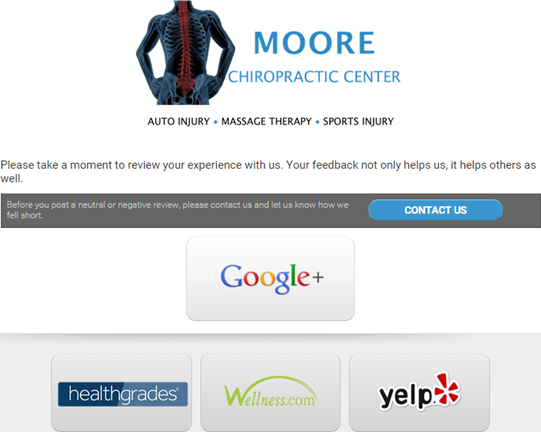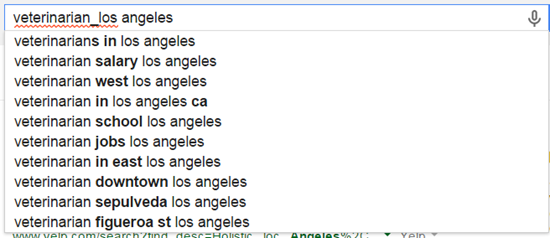We local-SEO geeks talk about the same old basic principles a little too much: clean up your citations, don’t get penalized by Google, be mobile-friendly, earn “local” links, create “unique” content, deserve reviews, ask for reviews, etc.
It’s all good advice. I’ve devoted many of my blog posts in the last 4 years to unpacking that advice so it’s easy to act on.
The trouble is we’re repetitive. We’re almost as bad as the talking heads at CNN. We rarely move on to what you should do once you’re pretty solid on the basics – and there is a lot you can and should do.
(In fact, many of the overlooked wins can also help you even if you just started working on your local SEO.)
Here are 20 stones I find unturned way too often:
1. Nail the categories on your non-Google listings: Pick out the most-relevant ones, and as many of them as are applicable. Dig them up with Moz Local’s free “Category Research” area and with my category lists for Apple Maps and Yelp.
2. Do a second round of work on your citations. Do it a couple of months after the initial blob of work. You might be amazed at how many stragglers you find. Might be enough to motivate you for a third go-round.
3. Try to find and possibly hire a MapMaker editor to join the Forces of Good in your local anti-spam war. Of course, there’s no guarantee that even a MapMaker editor can stop your competitors’ spam offensive, but it’s worth a shot.
4. Become or get to know an “Elite” Yelper (like this recruit). Got a review that’s viciously personal, un-PC, or is obviously from an imposter? The Elite Yelper may know just how to phrase the takedown request for the best chances of a takedown. Also, because most Elite Yelpers don’t really have lives, Yelp seems to expect them to report data-errors (like wrong addresses), and usually acts on them.
5. Embedding on your website the Google map that’s featured on your Places page. Don’t embed a map of a generic address. You want Google to know people are looking up directions to you.
6. Get a Google Business View photo shoot. (10 reasons here.)
7. Pick the right itemtype for the blob of name / address / phone info that you’ve marked up with Schema.org markup. Or take a few extra minutes to go bananas with your Schema.
8. Join a couple of local and industry associations. I’m talking about your local Chamber of Commerce and the sorts of organizations you’d find if you Google the word that describes your business + “association” or “organization.” They’re often worth joining for the offline benefits, and you’ll probably get a good link.
9. Diversify the sites where you encourage customer reviews. The benefits are many.
10. Create a “Reviews” page. Use it to showcase your reviews (possibly with widgets and badges) and to ask any customers who visit the page to put in a good word. You can pretty easily create a page from scratch, or you can make a nice one with a service like Grade.us. Link to it in the signature of your emails, as a gentle way to encourage any customers you email to pick up a quill.

11. Write blog posts to answer super-specific questions that a customer might type into Google. Don’t try to rank for your main keywords (“How to Pick the Best Dentist in Cleveland: a Guide by Cleveland Dentists for Cleveland Dentist Patients”). It won’t work and you’ll look stupid. (Refer to this post and its follow-up.)
12. Get some barnacle SEO happening. By now, Will Scott’s concept isn’t new, but most business owners still don’t even try to do it. But just start with the basics: if you pick out all the right categories (see point #1) and encourage reviews on a variety of sites (see point #9) you’ll be in pretty good shape.
13. Use wildcard searches for keyword-research. (This one was new to me until very recently.)

14. Lengthen pages that aren’t ranking well – including and perhaps especially your homepage. Yes, this sounds old-school, and about as cool as a pocket protector. But I’m not telling you to add gibberish. Go into detail about what makes you different, describe your service / process, address concerns the reader might have, etc. Google likes having meat to sink its teeth into. One-paragraph Wonder Bread pages tend not to do as well.
15. Ask for reviews twice. People forget, and it’s a nice excuse to keep in touch. Follow up with customers you asked for a review – especially if they said they would. It’s easy to avoid making yourself a pest: just say you’d still appreciate their feedback, ask them if they have any questions for you, and thank them in advance.
16. Include links to sites where you have reviews. (Be sure to have those links open into a new browser tab, so nobody’s leaving your site.) Use review widgets and badges when you can.

17. Cannibalize underperforming microsites, bad blog posts, or other online carcasses. Grab (and edit as need be) any content that’s redeemable, and use it to make your site bigger and better.

18. Get listed on Apple Maps. Yes, everyone knows about aMaps by now, but I’m amazed at how many times I start working for clients and see only their competitors on Apple.
19. Try hard to reach non-English speakers, if applicable. Don’t just stick Se Habla Español (for example) in your footer as an afterthought. Include a paragraph in that language on your homepage and on your “Contact” page. Maybe create a whole page geared toward those customers. Be sure to use the hreflang tag if you have more than one version of the same page.
20. If you’re a local SEO-er, find steps your clients might be able to do better than you can. Don’t just look for more billable hours; look for the best person for the job, or the best combination of people. Don’t spend hours trying to dig up all their old phone numbers and addresses; ask them first. Whenever a writing task comes up, pump your clients for info. When you need to find link opportunities, send them my link questionnaire. They know the business better than you do. If you don’t get much cooperation, fine. At least you tried, and you’re giving them options. But I’ve found that most clients recognize when they’ve got just the right wrench for the oddly-shaped bolt.
—
What’s an “overlooked” local SEO tip you like?
Any that you’re considering but not sure about?
Leave a comment!

Awesome post Phil 🙂 These are all great points, and I wanted to mention that I had recently created my own questionnaire for clients after seeing your link questionnaire. It works great! The client loved that I had asked these questions! He said it bothered him that nobody had ever asked him those things before.
Getting information from the client can also offer an opportunity to get to know them better and make you more real to them.
Hey Erick, thanks for that great feedback.
Asking questions is such an easy win. (Not to do it is arrogant at best.)
Great info Phil! As usual, you really put the meat on the bone with this post. Thank you!
Hey, thanks, Frank.
I’m printing this one out and putting on my bulletin board. I think we all get stuck in the citations, content, local links trap.
Are you sure you don’t write for a sitcom? 🙂
Great stuff.
I write for a drama called Map Men. It’s about executives at a local SEO company who spend most of their time drinking, smoking, and philandering – but occasionally do client work 🙂
Hey Phil, on #5 “embed the Google map that’s featured on your Places page” – not sure I follow there does this just mean that my business shows up in the search box on the upper left when in google maps? Or is there a special places page only map that I need to get?
Thanks for the great post!
There are a couple ways to get to the map I’m talking about. But the easiest way is to go to your Places page, go to the “About” tab, and click the map. That’ll open up Maps in a new window. Click on the little gear in the bottom-right corner, and click the “Share or embed” link. Presto!
Hey Phil, great post. I also like to provide my clients with a short survey for their existing customers which is great for further insight to how they talk about your services/business. If you strategically target your customers with the best Life Time Value (LTV) you might be able to attract more of them. These questions are also great for writing content for your services pages.
What’s your job title?
What company do you work for?
How would you describe our product/business to a friend or colleague?
What questions did you have before using our service, i.e. what almost prevented you from using our services?
What ultimately convinced you to use our service?
Which features were the most important to you when deciding whether or not to use our service?
What did you hope to accomplish by using our service?
Thanks
Great questions, Chris. Thanks!
No worries Phil.
Phil, I really like and try to do 20. I realize that my clients know way more about their business than I do so I try to really understand their business as well as get keyword ideas as they often know searches that your standard keyword research doesn’t uncover.
I have seen the wildcard searches and am eager to start trying that. Seeing you push it after seeing it recently somewhere else just made me actually put it into my to do list!
That’s great SOP, Jeffrey.
Improve your on-site links.
Some sites hardly link out to other sites at all, which I usually attribute to vestiges of old school SEO thinking.
Some have hardly any contextual internal links. Improving internal links can improve crawlability and indexing, help the Search Engines to see related content around keyword themes, allow page authority to be better distributed AND help you to keep visitors from bouncing by enticing them to move around on the site.
Great points, Mary. Couldn’t agree more.
Thanks for another very useful article. I’m only on #3 and followed the link the MapMaper article https://www.localvisibilitysystem.com/2013/01/28/google-mapmaker-101-for-local-business-owners/
The article is two years old and I’m wondering how current the info is. But my main question is, now that there is Google My Business too, would you address in a future article how Gooogle Maps, Places, Plus and Business interact? Thanks!
Hey Estar,
Google Places and “Google My Business” are one in the same.
MapMaker editors’ wings have been clipped somewhat in the last 2 years, but the basic principles of that post still hold true.
Excellent step-by-step SEO tune up guide – thanks Phil 🙂
I am always so grateful for your excellent ongoing advice, thank you so much!
It REALLY pays to be a lurker in Phil’s world! just tell me where to send that bottle of scotch 🙂
Heh…thanks, Linda.
Hey Phil, another great post! I’m going to try and implement #20 and will be checking out grade.us.
I don’t have anything but anecdotal evidence that testimonials page helps with conversion. Do you have any data / research / testing that has been done that can be referenced showing the ROI for that type of page?
Thanks for saying so, David.
Testimonials: I know there’s data/research out there, and I’ve seen it. Can’t think of specific names and publications, though.
Doesn’t matter in my book: I’ve found credible testimonials (full name, city, and link if applicable) to be a huge conversions-booster, no matter what the page is.
Here’s some info on testimonials as effective lead gen content:
https://www.techvalidate.com/blog/wp-content/uploads/2013/10/most-effective-content-for-lead-generation1.gif
I believe Myles Anderson is working on putting together some dat on this, too.
Can’t have too many checklists! My whole system is designed is geared toward checklists. There are so many things to check to make sure we are doing the best for our clients. Having an organized method of of making sure the best of the best items are applied to each client is critical. This helps us to keep running efficiently as possible and enables us to handle more clients. He Phil, I have an idea for you. How about a link that says “If you feel this information is beneficial and would like to keep getting more, feel free to contribute to help keep the lights on!”
I would certainly click that link and send you some $$$!
Thanks, Bob. The lights are on real bright around here, but I always appreciate contributions to these causes:
https://www.localvisibilitysystem.com/giving-back/
Ok, I just helped Paws of Plainville, Inc. a little. 🙂
Thanks, Bob. You’ve got a favor in the Local Visibility System piggy bank 🙂